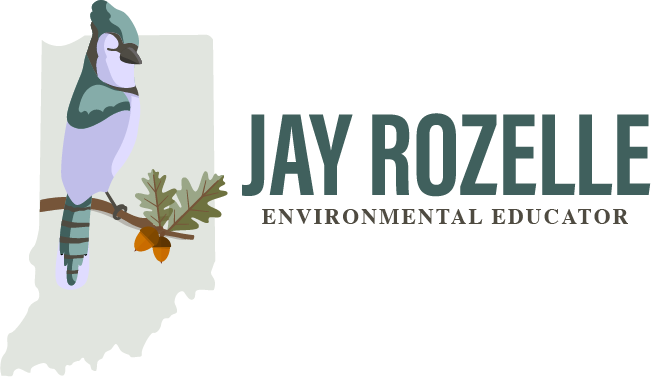THIS ARTICLE WAS AUTHORED BY TALLAMY (2009) AND NOWAK (2012). FOR MORE INFO, VISIT JAYROZELLE.COM/BIB
Plants Matter
In the past, we have ignored the vital role plants play in our landscapes.
Plants, of course, are the only organisms that capture energy from the sun and turn it into simple sugars and carbohydrates – the food that supports nearly all the food webs on earth.
Every time we bulldoze a native plant community, we are reducing the amount of food available for our fellow creatures. In fact, the amount of life that can exist in an area is directly proportional to the amount of vegetation in that area. Because plants are physical structures, they also provide housing for animals.
We can no longer landscape with aesthetics as our only goal. We must also consider the function of our landscapes if we hope to avoid a mass extinction that we ourselves are not likely to survive. As quickly as possible, we need to triple the number of native trees in our lawns.
”WE MUST CONSIDER THE FUNCTION OF OUR LANDSCAPES IF WE HOPE TO AVOID A MASS EXTINCTION THAT WE OURSELVES ARE NOT LIKELY TO SURVIVE.
We also need to underplant native trees with the understory and shrub layers absent from most managed landscapes.
Homeowners can do this by planting the borders of their properties with native trees such as white oaks (Quercus alba), black willows (Salix nigra), red maples (Acer rubrum), green ashes (Fraxinus pennsylvanica), black walnuts (Juglans nigra), river birches (Betula nigra), and shagbark hickories (Carya ovata).
Those trees should be underplanted with woodies like serviceberry (Amelanchier canadensis), bottlebrush buckeye (Aesculus parviflora), arrowwood (Viburnum dentatum), hazelnut (Corylus americanus), and blueberries (Vaccinium spp).
Studies have shown that even modest increases in the native plant cover on suburban properties raise the number and species of breeding birds, including birds of conservation concern.
As gardeners and stewards of our land, we have never been so empowered to help save biodiversity from extinction, and the need to do so has never been so great. All we need to do is plant native plants! (Tallamy, 2009).
WHY YOUR LANDSCAPING SHOULD CONSIDER BIRDS
“Small ‘islands’ of habitat can provide food resources to birds, particularly during migration.”
- Habitat loss is the single most important cause of the decline of species. Your yard, whatever its size, can offer habitat for birds.
- Many birds seldom or never use feeders, preferring natural foods.
- Feeder birds get only a relatively small portion of their nutrition from feeder food, especially during the critical nesting period.
- Native landscapes help sustain many other attractive species, including butterflies, moths, beetles, and the plants themselves.
- Cedar Waxwings that eat the berries of one species of non-native honeysuckle develop orange, rather than yellow, tail bands. This color change could be harmful to the birds since they use color in mate selection and territorial disputes.
- Many varieties of native species, which provide food for birds throughout the year, are being replaced by a very limited number of invasive non-native species. These invasives offer food of reduced variety, quality, and seasonal availability.
PLANNING YOUR YARD
Keep the native plants in your yard, and remove the invasive exotics.
- Mimic the multiple layers of growth found in many natural settings: trees, shrubs, vines, and herbaceous plants.
- Select plants that will provide berries, seeds, nuts, and insects for birds.
- Provide evergreens for winter shelter.
- Keep dead trees, standing or fallen, to provide insect food, cavities, and perching sites for birds. The branches of dead trees can be removed if they are dangerous.
- Create a brush pile to provide shelter.
- Leave at least some leaf litter for ground-feeding birds, who will scrape through the litter for insects.
- Stop using herbicides and pesticides, which can be ingested by birds as they feed on insects and plants. Also, don’t use rodenticides, which harm or kill birds of prey when they feed on animals that have ingested the poison.
- Limit or eliminate your lawn for less mowing, fertilizing, watering, and pollution, and to make more room for natives.
Regardless of the size of your yard, you can help reverse the loss of bird habitat. By planting the native plants upon which our birds depend, you’ll be rewarded with a bounty of birds and natural beauty just beyond your doorstep (Nowak, 2012).
”BY PLANTING THE NATIVE PLANTS ON WHICH OUR BIRDS DEPEND, YOU'LL BE REWARDED WITH A BOUNTY OF BIRDS AND NATURAL BEAUTIFUL JUST BEYOND YOUR DOORSTEP.

